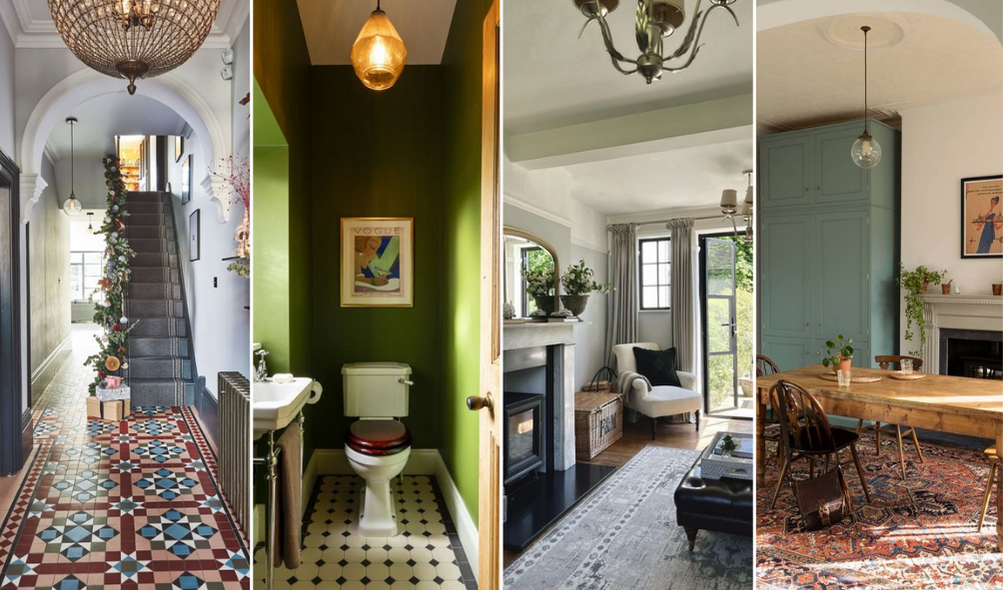
FAQ About Edwardian House Decor

Were there specific guidelines for accessorizing Edwardian dining rooms?
Table Settings: The dining table was a focal point, and attention to detail in table settings was crucial. White linen tablecloths and napkins were commonly used, and the table was set with fine china, silverware, crystal glasses, and polished silver or silver-plated serving utensils.
Centerpieces: Elaborate centerpieces were popular for dining tables. Crystal or silver epergnes with floral arrangements were common choices. Flowers, particularly roses, were favored for their elegance and fragrance. Additionally, candelabras with candles added a touch of sophistication.
Linens and Textiles: Table linens played a significant role in Edwardian dining room decor. Lace or embroidered table runners, doilies, and placemats were used to add a decorative touch. Chair covers and slipcovers made from luxurious fabrics like silk or damask were also employed.
China Cabinets: China cabinets or sideboards were common in Edwardian dining rooms to display fine china, glassware, and decorative items. Cabinets with glass doors allowed for a showcase of the family's best tableware.
Wall Decor: Walls were often adorned with decorative elements such as framed artwork, mirrors, or plates. Groupings of framed botanical prints or art featuring nature motifs were popular choices.
Lighting: Overhead lighting fixtures, such as chandeliers, were essential for illuminating the dining table. Edwardian chandeliers featured elegant designs with crystal or glass pendants. Wall sconces might also be used to enhance the ambient lighting.
Rugs and Carpets: Area rugs or carpets were sometimes used to define the dining area within the room. Floral or geometric patterns in lighter colors complemented the overall aesthetic.
Drapery: Window treatments were chosen to complement the overall decor. Lace or sheer curtains allowed natural light to filter through while still maintaining a level of privacy. Heavier drapes with elegant patterns were also used for a more formal look.
Place Cards: Formal dining occasions often called for the use of place cards. These cards, featuring the names of guests, were placed at each setting to indicate assigned seats. They were sometimes presented in decorative holders.
Decorative Tableware: Displaying decorative plates, bowls, or tureens on sideboards or shelves added visual interest to the dining room. These pieces might have featured intricate patterns, hand-painted designs, or gilded accents.
Vases and Urns: Decorative vases and urns were commonly used as accessories in Edwardian dining rooms. These vessels held fresh flowers or greenery, contributing to the overall elegance and refinement of the space.
Candlesticks and Candelabras: Candlesticks and candelabras were popular accessories for the dining table and sideboards. They added a touch of ambient lighting and were often crafted from silver or other decorative metals.
Clocks and Timepieces: Ornate clocks and timepieces were sometimes placed on mantels or sideboards. These decorative items served a practical function while also adding a sense of sophistication.
Chairs and Seat Cushions: Dining chairs were often adorned with seat cushions or slipcovers. These cushions, made from plush fabrics and featuring decorative patterns, added comfort and style to the seating.
